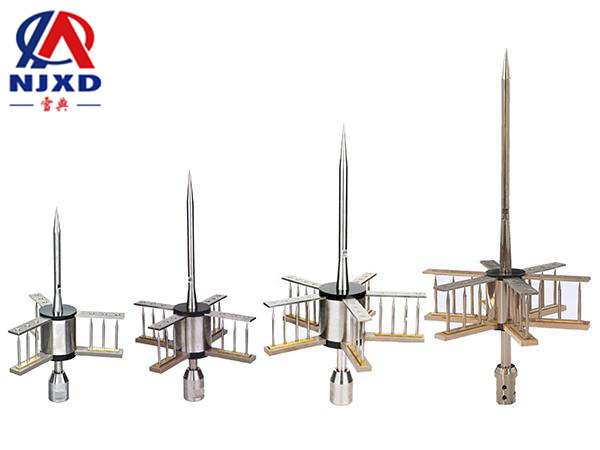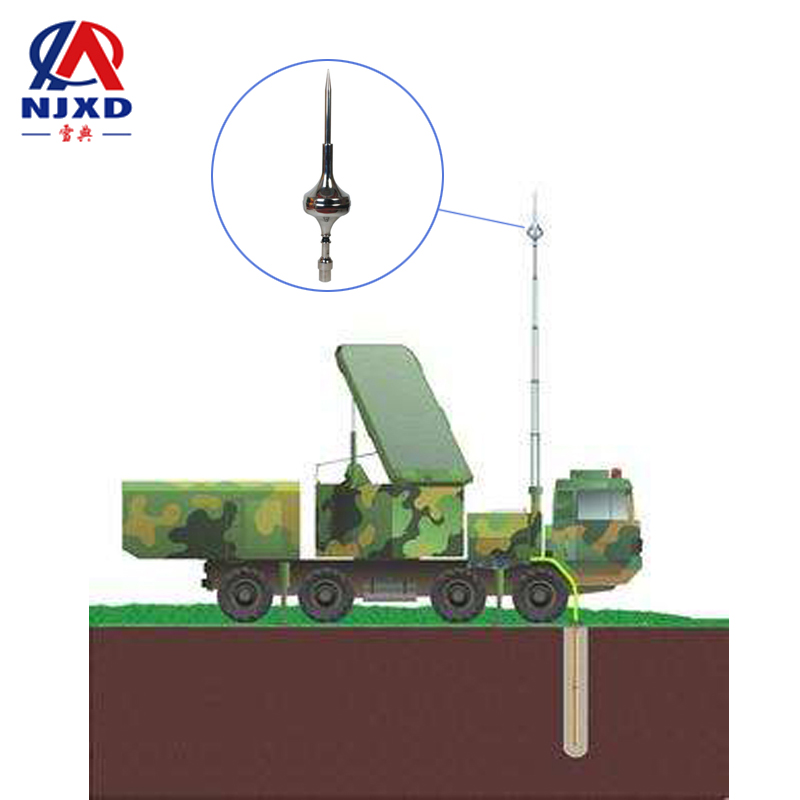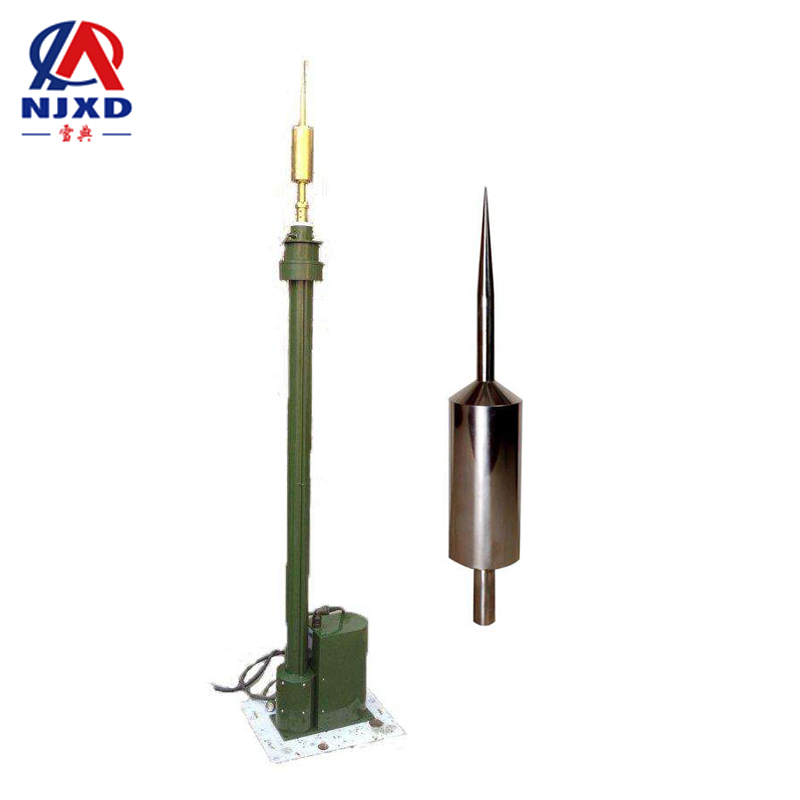NEWS
Grounding device classification ightning rod lift rod
Time:2021-05-11 View:

Grounding device refers to the general name of the connecting conductor between the ground-electrode buried underground and the equipment from the ground-electrode.
Definition
Grounding device is also called grounding integration device: equipment that forms electrical connection between electrical equipment or other objects and ground. (Building Electrical Construction Technology). The grounding device consists of grounding electrode (plate), grounding bus (indoor and outdoor), grounding down lead (ground jumper wire), and frame grounding. It is used to achieve the purpose of connecting the electrical system with the Earth. The metal object which is in direct contact with the Earth to realize electrical connection is the grounding electrode. It can be artificial grounding pole or natural grounding pole. This grounding electrode can be endowed with some electrical functions, such as system grounding, protection grounding or signal grounding. Grounding busbar is the reference potential point of the building's electrical device, through which the part of the electrical device that needs to be grounded is connected with the grounding electrode. It also plays another role, that is, it connects the equipotential connection lines in the electrical device to each other, thus realizing the total equipotential connection between the conductive parts of large pieces in a building. The connecting line between the grounding electrode and the grounding bus bar is called the grounding electrode lead.
safety isolation transformer safety isolating transformer. Supply tools, other equipment and distribution circuit safety extra full low voltage transformer. Its input winding and output winding are at least insulated by double insulation or reinforced insulation.

Classification
Grounding device is composed of grounding body (round steel, angle steel, flat steel, steel pipe, etc.) buried in soil and grounding wire for connection.
According to the purpose of grounding, the grounding of electrical equipment can be divided into: working grounding, lightning protection grounding, protective grounding and instrument control grounding.
Working grounding: it is to ensure the grounding required for the normal operation of the power system. For example, the transformer neutral point grounding in the neutral point direct grounding system is used to stabilize the potential of the power grid to the ground, thus reducing the insulation to the ground.
Lightning protection grounding: it is a grounding set for lightning protection. For example, the grounding of ightning Rod (line) (now called lightning rod, line, belt) and Lightning arrester aims to make lightning current be smoothly introduced into the Earth to reduce lightning overvoltage, so it is also called overvoltage protection grounding.
Protective grounding: also known as safe grounding, it is the grounding set for personal safety, that is, the electrical equipment shell (including cable sheath) must be grounded to prevent the shell from being charged to endanger personal safety.
Instrument Control grounding: thermal control system, data acquisition system, computer monitoring system, transistor or microcomputer relay protection system and remote communication system of power plant, etc., in order to stabilize potential, grounding set to prevent interference. Also known as electronic system grounding.
Basic concepts of grounding resistance:
Grounding resistance refers to the resistance encountered when current passes through the grounding body into the earth and spreads to the surrounding. The Earth has a certain resistivity. If there is an outdated current flow, there will be different potentials everywhere in the Earth. After the current is injected into the Earth through the grounding body, it spreads around in the form of a current field. The farther away from touchdown, the larger the hemispherical flow area, the smaller the current density in the Earth, therefore, it can be considered that at a relatively far distance (15~20m away), the resistance per unit diffusion distance and the ground current density are close to zero, where the potential has been zero potential. The curve U = f(r) in the figure indicates the potential distribution of the surface (r indicates the distance from the lightning current injection point).
The ratio of potential Um at touchdown to ground current I is defined as the ground resistance R at this point, R = Um/I. When the grounding current is a fixed value, the smaller the grounding resistance, the lower the potential Um, and vice versa. Grounding resistance mainly depends on the structure, size, buried depth and local soil resistivity of grounding device. Because the resistivity of metal grounding body is much smaller than that of soil, the resistance of grounding body itself can be ignored in grounding resistance.

CATEGORY
NEWS
- Basic Introduction to down lead ightning Rod telescopic bracket
- Grounding device classification ightning rod lift rod
- Installation of grounding device ightning Rod telescopic rod
- Lightning protection device introduction ightning Rod lifting bracket
- Components of lightning protection device ightning Rod telescopic mast